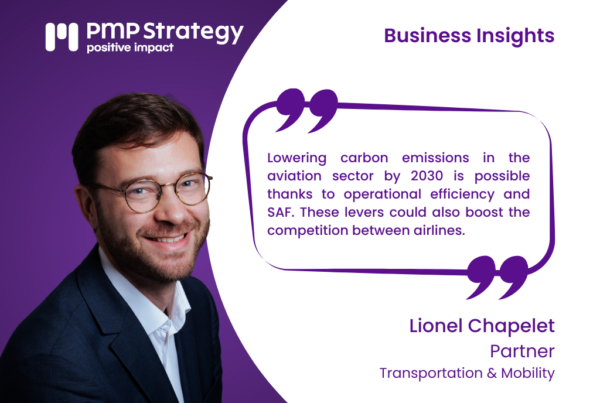The imagination often augurs massive transformations. The submarine of Jules Verne in 20,000 leagues under the sea or the headphones of Ray Bradbury in Fahrenheit 451 are two examples of creations initially considered impractical. Science fiction is also full of references to vehicles of the future that move automatically, on the road or in the air, obeying the finger and the eye at a simple command. The fantasy of the driverless car, which is already widely encountered in planes or subways, comes up against greater complexity for road travel, where one does not dedicate an air corridor or a rail to a single object. However, it has never seemed so close to us, foreshadowing economic and societal benefits equal to the technical challenge of its realization.
A revolution to accept
The growing use of artificial intelligence instead of humans illustrates the fact that technological advances make it possible to make the right decisions faster and more simply. The autonomous vehicle, with on-board computing, will thus make it possible to drive vehicles more reliably, regardless of the reaction time of a driver who is sometimes tired or behaving at risk. Despite the first accidents in vehicles equipped with artificial intelligence, there has been a very rapid improvement in their reliability: in 2016, Waymo (formerly Google Car), announced that it had reduced the rate of human intervention in its car by 75%. autonomous [1].
The improvement in reliability will logically translate into an improvement in road safety, the first challenge of the intelligent and connected vehicle according to a survey carried out by Opinion Way [2]. The impact of this reliability, in addition to the reduction in the number of victims, is also a source of savings for communities in terms of prevention, emergency services and health, and will increase citizens’ confidence in the car.
The appeasement of drivers who have become passengers, especially in very congested environments, will also be accompanied by a transformation of constrained time into useful time. The autonomous vehicle will offer him the opportunity to work, read, sleep, make phone calls… and could even become a real living space. This weather will be all the more pleasant as the parking will also be automated, whereas for example in Paris, 3 vehicles out of 10 would be looking for a place. [3]
The vehicle of the future therefore poses a paradox: even being carbon-free and in a connected environment that manages vehicle fleets optimally, won’t its attractiveness be the source of an increase in congestion? However, this question seems remote as the simple acceptance of autonomous driving seems today to be difficult. Still according to the survey carried out by Opinion Way, 56% of French people say they are not ready to drive an autonomous vehicle.
AN ECONOMIC MODEL TO FIND FOR MANY ACTORS
The attractiveness of the autonomous vehicle and its technological cost reinforce the need for the development of new associated services (see our article on Maas services). The first deployments of carsharing and carpooling services call into question the usual model of vehicle ownership, especially since a private car is only in circulation 5% of the time according to CERTU [4]. Car manufacturers are already preparing to move from industrial status to that of service provider: PSA with Free2Move, Renault with Renault Mobility, or General Motors with Moven are already anticipating the metamorphosis of their economic model to find the services that will bring the most benefits. value.
Panorama of the players in the autonomous vehicle ecosystem, source: PMP
On the other hand, in view of the still increased weight of technology in vehicles, automobile manufacturers could become mere mechanical service providers for software developers who would market the finished vehicle. Like Waymo, GAFA very quickly detected the added value they could bring to this market. They could also intervene as a complement in on-board technologies in the autonomous vehicle environment, in particular in connected infrastructures, and interfere with traditional telecommunications players and mobility operators who are already working on prototypes of smart roads and highways and connected (see SCOOP @ F project).
In addition to their interactions with vehicles, infrastructures must be integrated into a new logic of public space planning. How should infrastructure managers organize public space to ensure efficient circulation of autonomous vehicles? Indeed, in the event of continuous circulation of vehicles, parking spaces could prove to be unnecessary, and why not become a simple stopping space so that passengers can get on and off at any place. Managing rush hour traffic, recharging and parking requires more than ever to think of the city around transport.
This management is all the more complex as initially, autonomous vehicles will have to coexist with non-autonomous vehicles, and be integrated into a multimodal environment, with pedestrians. Regulators will therefore have to ensure that they adopt an adequate timetable for the deployment of autonomous vehicles, adapted to the changing environment.
The role of mobility operators, in charge of the movement of the autonomous vehicle fleet, is therefore at the heart of this evolution of the environment. Even if the absence of a driver offers them a major axis for the transformation of the actors of urban transport (the wage bill indeed represents a significant part of the costs of the transport networks, sometimes more than 50% [5]), it falls to them. to define their new professions. Other professions (taxis, VTC, logisticians, garage owners, etc.) will also have to be reinvented to guarantee the operational management of the future fleet of vehicles (handling breakdowns, upkeep and maintenance of the fleet, etc.).
Another aspect of operational management is that of the role of the various stakeholders. For example, who will bear responsibility for the accident (algorithm designer, sensor manufacturer, manufacturer, mobility operator, etc.)? Insurers must therefore think about new products to define the responsibilities of each, and define the perimeter to which the insurance will apply: on a vehicle? A service ? A software ? A person ? They will also have to prepare for possible hacks, which will be inevitable given the permanent connection of the vehicle to its network. The safety of passengers and the data exchanged could then be endangered.
There is therefore still total uncertainty about the economic model linked to the deployment of the autonomous vehicle: who buys, who maintains, who invests in infrastructure, which actors for which revenue sharing? It is to prefigure new models that cooperation is taking place to move from prospecting to reality.
MULTIPLE COOPERATIONS
The illustration of this cooperation is the structuring of the vehicle sector of the future made in France, in particular via the ITE Vedecom. Automobile manufacturers and subcontractors, research laboratories, universities, mobility operators and industrial companies took part in the creation of the institute to advance the design of the “low-carbon and communicating vehicle and its mobility”.
Via this structure, several experiments have already been carried out in France, notably in Versailles, or even during the ITS World Congress in Bordeaux in 2015. These demonstrators complement other multilateral agreements (Renault-Nissan / Transdev in Rouen, Navya / Transdev on the site of the Civaux nuclear power plant, Navya / Keolis in the Confluence district of Lyon) to facilitate the acceptance of autonomous traffic. A laboratory city, Transpolis, is even being created in the Lyon metropolitan area, to meet the ambition of developing autonomous vehicles in a constrained environment. The same dynamic can be observed internationally (Google / Fiat, Uber / Volvo, etc.), proof that regulators will have to be vigilant in order not to penalize a region in the development of its economic players.
In view of the many perspectives offered by the autonomous vehicle and the many industries that will be impacted by its deployment, the territories seek to attract experiments to promote the economic development of their territory, and be at the forefront of innovation in terms of new mobility. The multiplication of experiments is all the more necessary as we can imagine very diverse use cases depending on the type of territory:
- Robot taxis in more rural areas
- Collective transport shuttles with flexible routes for the last mile
- Automated carsharing for door-to-door journeys
- Logistics optimizations …
Despite the boom in experiments, none to date has been maintained over time in an open environment. But the legislative framework and technological progress should soon make it possible to open the door and touch a little more on what was only a dream not long ago.
[Sources]
[1]https://www.dmv.ca.gov/portal/wcm/connect/946b3502-c959-4e3b-b119-91319c27788f/GoogleAutoWaymo_disengage_report_2016.pdf?MOD=AJPERES
[2]https://www.opinion-way.com/fr/sondage-d-opinion/sondages-publies.html?task=document.viewdoc&id=1685
[3]https://www.lesechos.fr/27/05/2014/LesEchos/21696-054-ECH_a-paris–la-chasse-aux-voitures-reste-ouverte.htm
[4]https://citiz.coop/uploads/media/default/0001/01/aefc8be39c52e4a4945f632fd63f88a3dd34b560.pdf




